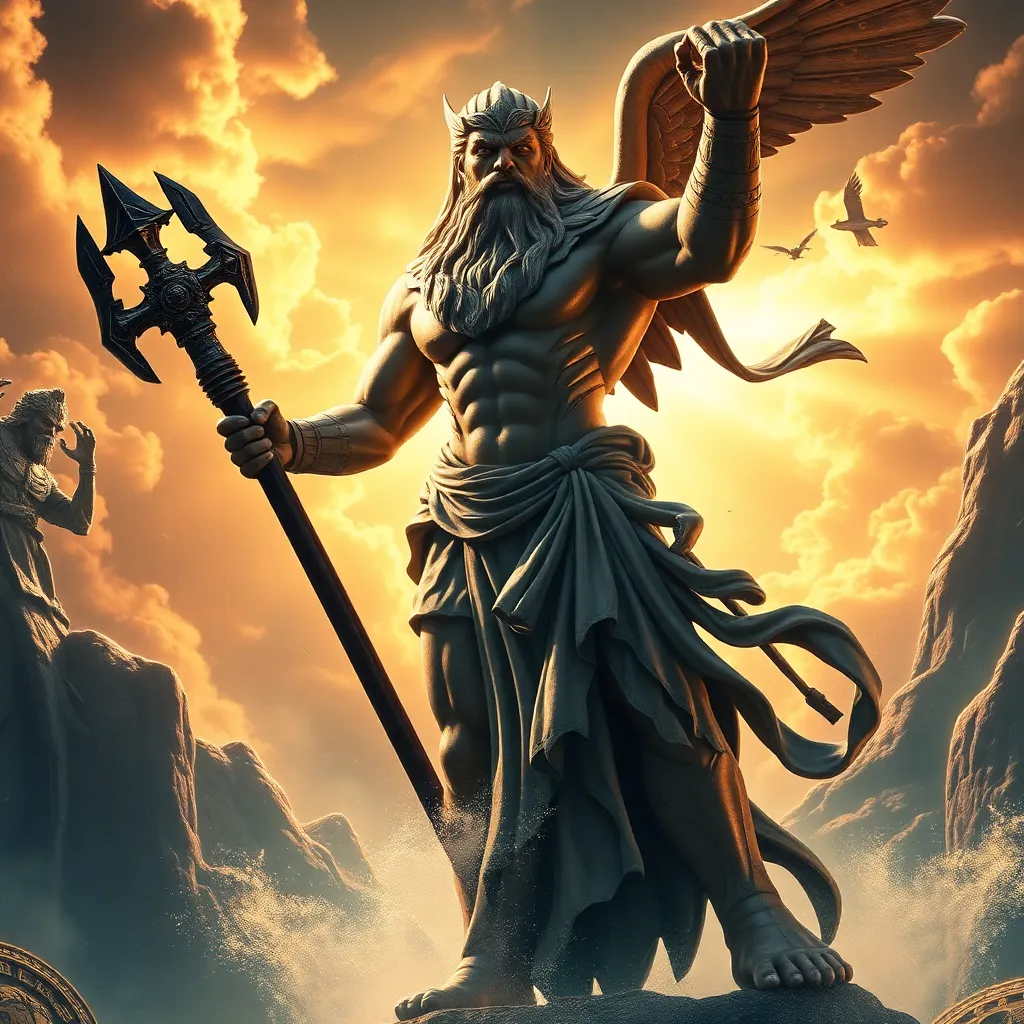Titans in Modern Pop Culture: From Movies to Video Games
I. Introduction
The term “Titans” in pop culture refers to powerful and larger-than-life figures that often embody strength, conflict, and the struggle between gods and mortals. These characters, rooted in ancient mythology, have evolved significantly, becoming emblematic of modern storytelling across various media. Titans serve not only as mythical embodiments of power but also as vehicles for exploring complex themes and narratives that resonate with contemporary audiences.
This article aims to examine the historical background of Titans, their representation in film, literature, video games, and their cultural impact, while also highlighting the vibrant fan culture surrounding them.
II. Historical Background of Titans in Mythology
Titans originated in ancient Greek mythology, primarily as the offspring of Gaia (Earth) and Uranus (Sky). They were the first generation of divine beings, preceding the Olympian gods. Their most notable members include Cronus, Rhea, Oceanus, and Hyperion, among others. The Titans were often depicted as colossal deities who wielded immense power, and their narratives set the stage for the eventual rise of the Olympians, leading to epic battles such as the Titanomachy.
Over time, the portrayal of Titans evolved through various interpretations in literature and art. From Hesiod’s “Theogony” to later works during the Renaissance, Titans have been depicted as both antagonists and tragic figures. Their complexity has allowed them to influence contemporary narratives, where their stories often symbolize rebellion against authority or the quest for identity.
III. Titans in Film and Television
Titans have made significant appearances in modern cinema and television, with notable films such as:
- Clash of the Titans (1981, 2010) – A retelling of the myth of Perseus, featuring the Titan Kraken.
- Wrath of the Titans (2012) – A sequel that delves deeper into the conflicts between gods and Titans.
In television, series like Attack on Titan have redefined the concept of Titans, portraying them as monstrous beings that pose existential threats to humanity. The show has garnered a massive following, emphasizing themes of survival, freedom, and the moral ambiguities of war.
The representation of Titans in visual media often reflects contemporary societal issues, such as the struggle for power, the consequences of hubris, and the duality of human nature, making them relevant to modern audiences.
IV. Titans in Literature and Comics
Titans have also found a place in literature and graphic novels. Works such as:
- The Titan’s Curse by Rick Riordan – Part of the “Percy Jackson & The Olympians” series that explores the lives of demigods and Titans.
- Teen Titans comics – A staple in the DC Universe, focusing on young heroes who grapple with their identities and powers.
Comic adaptations like the Teen Titans offer a fresh perspective on Titan mythology, focusing on themes of friendship, responsibility, and the struggles of adolescence. These narratives resonate with younger audiences, making the concept of Titans more accessible and relatable.
V. Titans in Video Games
The gaming industry has embraced Titans in various formats, with popular titles such as:
- Titanfall – A first-person shooter featuring giant mech suits called Titans, blending futuristic warfare with strategic gameplay.
- God of War – Incorporates Titan characters in an action-adventure format, exploring themes of revenge and redemption.
These games not only feature Titans as characters but also integrate them into gameplay mechanics, such as the use of Titans in battle or as formidable opponents. The engaging narratives and immersive experiences provided by these games highlight the impact of Titans on player engagement and storytelling.
VI. Cultural Impact and Symbolism
Titans symbolize power, conflict, and the complex relationship between humanity and the divine. Their portrayal across various cultures reflects the universal themes of struggle and ambition. In modern contexts, Titans often represent:
- Power Dynamics: The rise and fall of empires and leaders.
- Identity: The search for self in a world filled with expectations and challenges.
- Morality: The consequences of unchecked ambition and the ethical dilemmas faced by individuals.
Through these themes, Titans allow storytellers to explore contemporary issues, making them relevant to today’s audiences.
VII. Fan Culture and Community Engagement
The rise of fandoms related to Titan-based media has fostered a vibrant community of enthusiasts. Fans engage through:
- Fan Art: Creative expressions that reinterpret Titan characters and stories.
- Fan Fiction: Expanding narratives and exploring alternative storylines involving Titans.
- Cosplay: Dressing as Titan characters at conventions and events.
Events and conventions, such as Comic-Con, celebrate Titans in pop culture, bringing fans together to share their passion and creativity. These gatherings often feature panels, workshops, and merchandise that highlight the enduring appeal of Titans.
VIII. Conclusion
The appeal of Titans in modern pop culture is enduring, as they represent fundamental human experiences and struggles that resonate across time and space. Their representation in various media continues to evolve, reflecting the changing dynamics of society and storytelling.
As we look to the future, the potential for new and innovative interpretations of Titans remains vast, ensuring their relevance in contemporary narratives. The significance of Titans in modern storytelling is not merely about their power; it is about their ability to inspire, provoke thought, and connect with audiences on profound levels.




